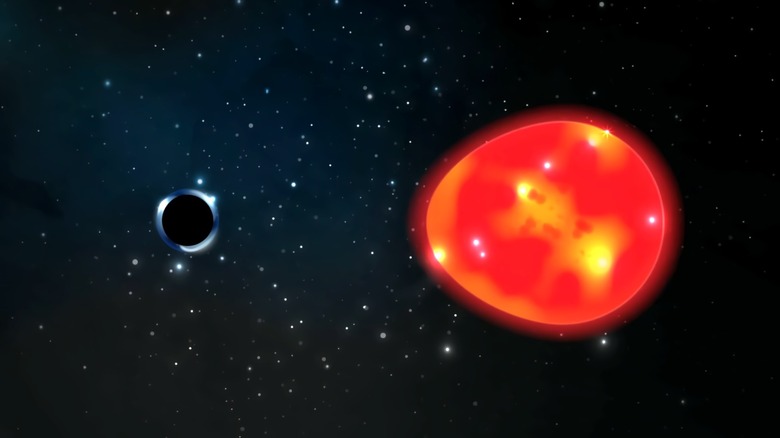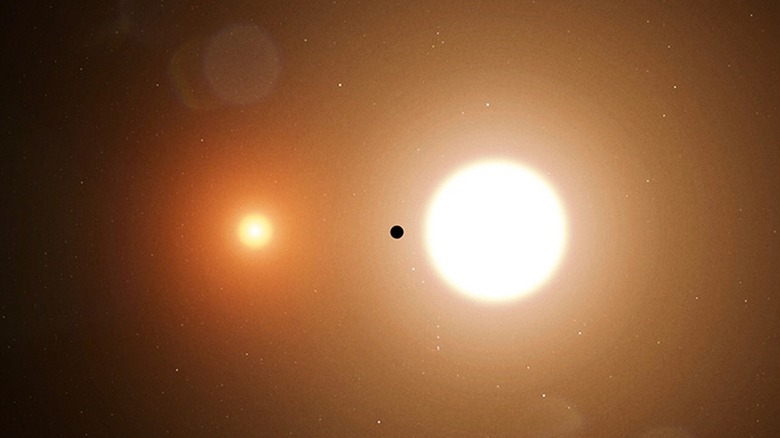Scientists Just Made A Big Discovery About Black Holes
Last year, a team from The Ohio State University discovered an object that was said to be one of the smallest black holes ever seen, and also the one closest to Earth at just 1,500 light-years away. It was followed by the discovery of another object some 12,000 light-years away that was thought to be a single mass-gap black hole or a high-mass neutron star. It now appears these conclusions may be wrong. Researchers behind both the discoveries combined their datasets and noticed that the two objects, named Giraffe and Unicorn, are actually double-star systems, Science News reports.
What is remarkable here is that the stars have been observed at a never-before-seen evolutionary stage. Each system consists of two stars, one of which is an older red giant with a puffy atmosphere, while the other one is a much smaller sub-giant star in its late stages of stellar life. Interestingly, the distance between the two stars is small enough that the sub-giant appears to be sucking materials from the accompanying red giant due to gravitational pull.
And in the process of accumulating more material and gaining mass as a result of it, the sub-giant spins faster. The phenomenon of atmosphere loss is not unique to stars though. Earlier this year, scientists spotted mini-Neptunes in the TOI 560 and HD 63433 star systems that were losing gaseous material from their puffy atmosphere and turning into Super-Earths.
A glimpse of rare stellar evolution
In the study, which was recently published in "Monthly Notices of the Royal Astronomical Society," the team behind the latest discovery notes that the Giraffe and Unicorn star systems offer a glimpse into a rare phase of binary star evolution that eventually gives birth to a compact binary containing two helium white dwarfs. Based on the data available, the team notes that the giants in each system underwent the CNO cycle (or the carbon-nitrogen-oxygen cycle), the sequence of thermonuclear reactions that acts as the source of energy radiated by hotter stars.
Eventually, the two giants in the Unicorn and Giraffe star systems started having their envelopes stripped. The datasets also suggest that both the stars in each system had equal mass — or, maybe, the sub-giant companion was inflated temporarily due to quick accretion. In the Giraffe system, the companion star circles the red giant on an 81-day circular orbit, while the Unicorn follows a 60-day orbit.
The team proposes that the stars in Unicorn and Giraffe are currently in a phase of mass transfer that involves their atmosphere being stripped away. Given the current rate and nature of mass transfer, the sub-giants will eventually evolve into helium white dwarfs, but there is also a small possibility that it turns into a sdOB star, which is a type of helium-rich, low-mass hot star.

